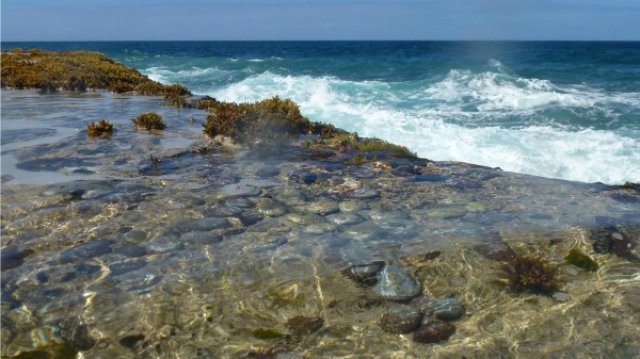
A 700 kilometre stretch of mangrove shoreline in the Gulf of Carpentaria has died, James Cook University Professor Norm Duke told the Australian Mangrove and Saltmarsh Network Conference in Darwin in early July.
Duke, a spokesperson for the Australian Mangrove and Saltmarsh Network, said the scale and magnitude of the loss was "unprecedented and deeply concerning" and he had no doubt the dieback was related to climate change.
"It's a world-first in terms of the scale of mangroves that have died," he told the ABC.
Duke flew over the Gulf of Carpentaria last month to survey the extent of the dieback and found hectares of mangroves dying at Limmin Bight, in the Northern Territory and Karumba, in Queensland.
He described the scene as the most "dramatic, pronounced extreme level of dieback that I've ever observed".
"We're talking about 10,000 hectares of mangroves lost across this whole 700 kilometre span," he said. "Certainly nothing in my experience had prepared me to see anything like that. These are the most shocking images of dieback I've ever seen."
Analysis of satellite imagery and remote sensing confirmed the mangrove dieback in both states had happened in the space of about four weeks in late November and December last year, at the same time as the coral bleaching of the Great Barrier Reef.
Duke said: "That was the end of an unusually long dry period. That is probably the major contributing factor, the change of climate such that there was virtually no wet season last year.”
He said a deadly lack of fresh water and increased water and atmospheric temperatures stressed the plants beyond their tolerance.
"One of the mangroves' roles is that they prevent erosion of mud banks,” he said, “and as they've died, a lot of the sediment is going to be released and make the water dirtier and that will kill seagrass and coral. If it involves seagrass then the implications extend much more broadly, you're talking about turtles and dugongs.”
Mangroves are essential breeding grounds for fish stock including prawns, crabs and, in the north of Australia, finfish such as barramundi. Mangroves and coastal wetlands take in 50 times more carbon than tropical forests by area. Australia is home to 7% of the world's mangroves.
Duke and conference delegates called for mangrove monitoring efforts to be scaled-up as a matter of priority, so scientists can establish baseline conditions of national shorelines and quickly isolate and manage dieback events such as those seen in the Gulf of Carpentaria.
Like the article? Subscribe to Green Left now! You can also like us on Facebook and follow us on Twitter.